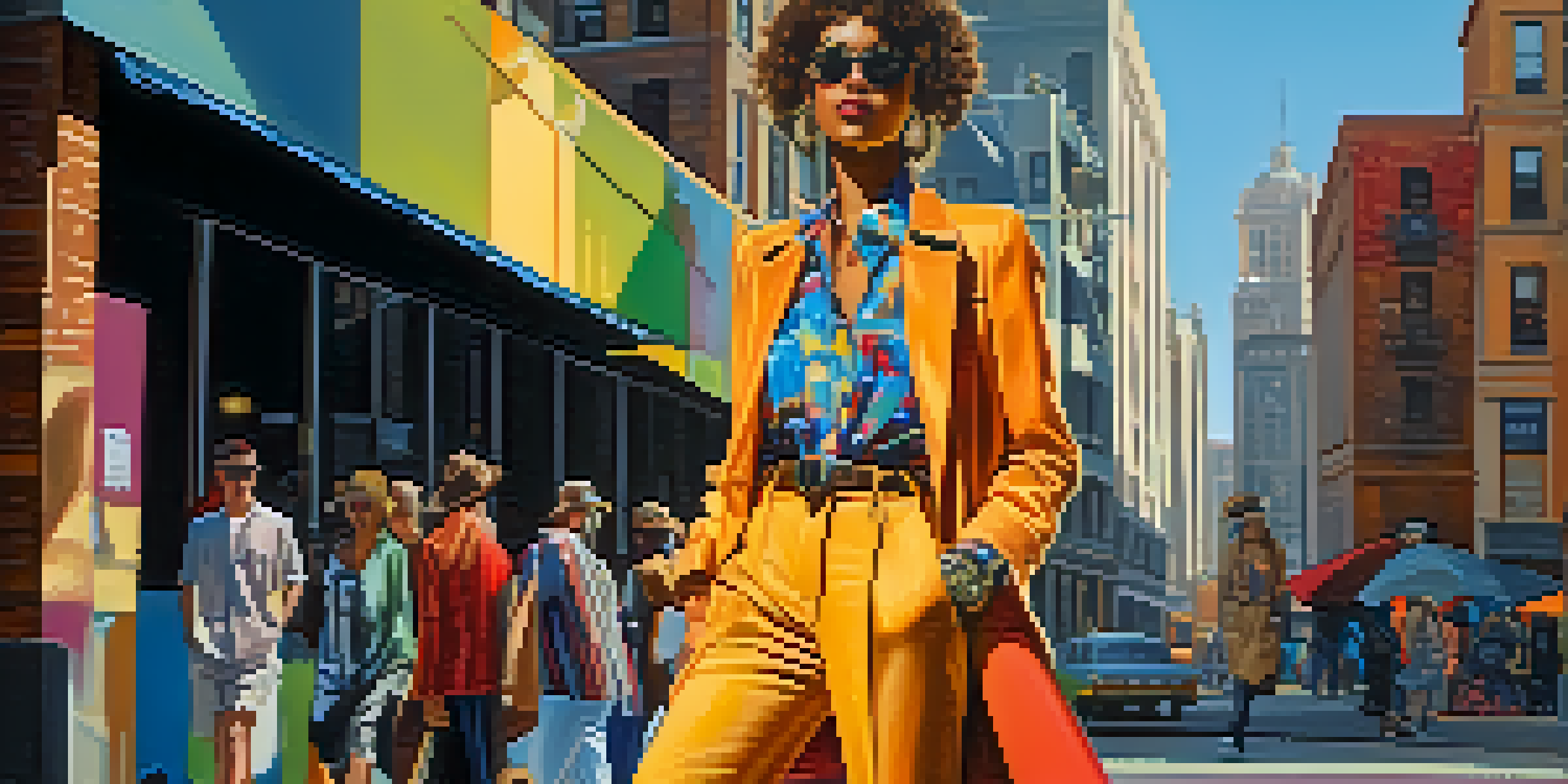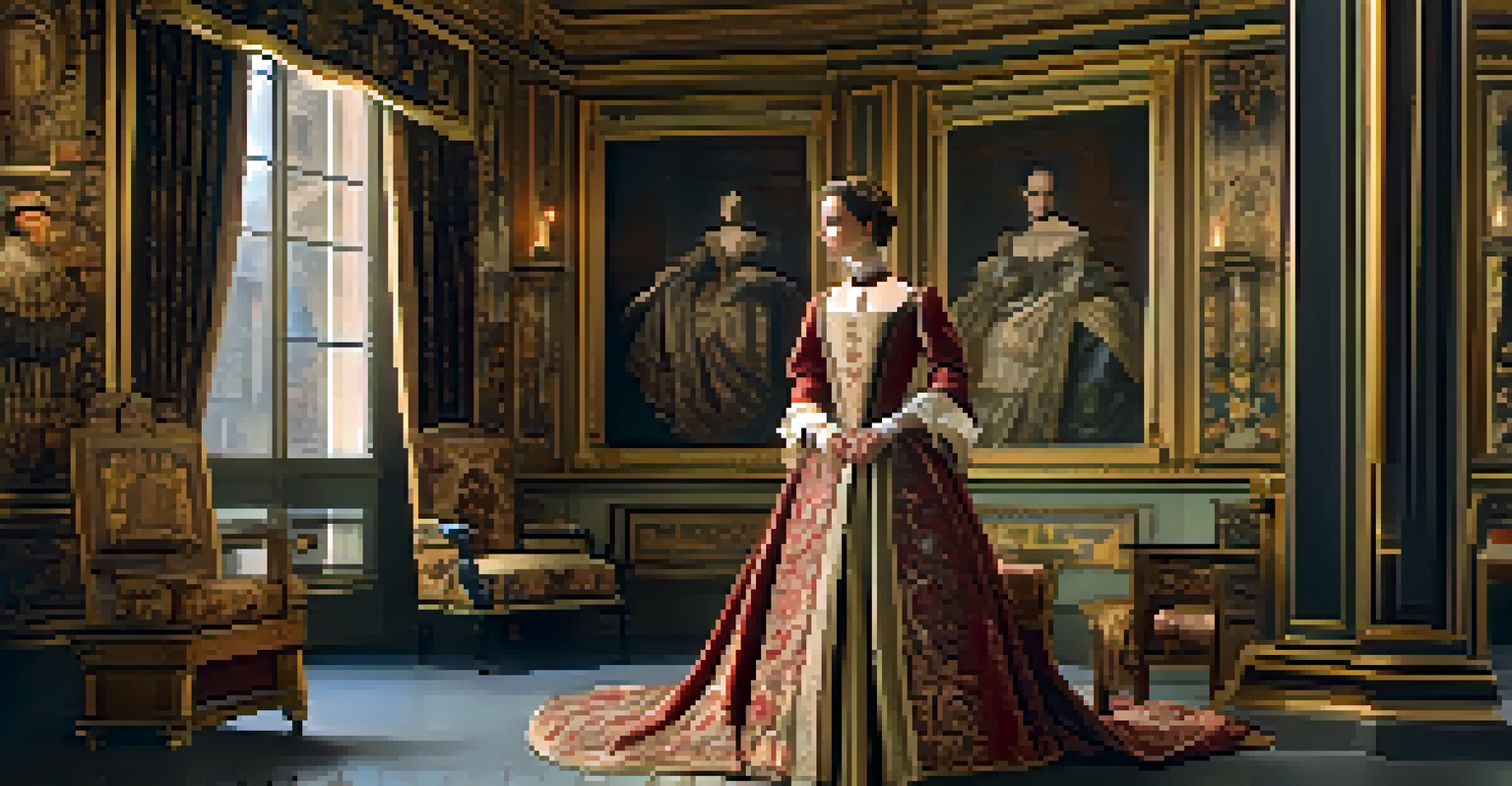The Evolution of Fashion: Class Identity in Historical Context

Fashion's Role in Expressing Social Class
Fashion has long been a mirror, reflecting the social hierarchies of its time. From the robes of royalty to the everyday wear of peasants, clothing serves as a powerful indicator of class identity. The rich often adorned themselves in luxurious fabrics and intricate designs, showcasing not just wealth but status.
Fashion is the armor to survive the reality of everyday life.
For instance, in the 18th century, the elaborate garments of the French aristocracy stood in stark contrast to the simpler attire of the working class. This visible disparity in fashion often fueled social tensions and revolutions, as clothing became a symbol of both privilege and oppression. The very act of dressing became a declaration of one's place in society.
As we delve deeper into history, we uncover how fashion has been used not just to signify wealth, but to construct and challenge social identities. The evolution of fashion illustrates how class distinctions are both maintained and contested through what we choose to wear.
Historical Context: The Middle Ages to the Renaissance
During the Middle Ages, clothing was closely linked to feudal systems, where nobility flaunted their status with ornate garments. Sumptuary laws even dictated what colors and fabrics individuals could wear based on their social rank. These regulations served to reinforce class divisions, ensuring that one's attire was a constant reminder of their societal position.

Transitioning into the Renaissance, fashion began to evolve with the rise of a wealthy merchant class. As trade expanded, new fabrics and styles emerged, allowing the middle class to mimic the aristocracy. This shift not only blurred class lines but also sparked a sense of individualism, as people began to express their identities through their clothing choices.
Fashion Reflects Social Class
Throughout history, fashion has served as a powerful indicator of social class, showcasing wealth, status, and identity.
The Renaissance marked a pivotal moment in fashion history, reflecting broader social changes. Clothes became an avenue for self-expression, challenging the rigid class structures of the past and signaling the beginning of fashion as a dynamic force in society.
The Industrial Revolution: Mass Production and Class Identity
The Industrial Revolution brought about significant changes in the fashion landscape, primarily through mass production. With the rise of factories, clothing became more accessible to the working class, allowing for a greater variety of styles and trends. This democratization of fashion meant that even those of limited means could participate in sartorial trends, altering perceptions of class identity.
Clothes mean nothing until someone lives in them.
However, this accessibility did not erase class distinctions; instead, it created new ones. The wealthy began to seek uniqueness through custom-made garments, while the masses often wore similar, factory-produced clothing. This led to the emergence of fashion as a means of both conformity and individuality, depending on one’s social standing.
The Industrial Revolution exemplified how fashion could simultaneously unite and divide society. It laid the groundwork for future fashion trends, highlighting the complex relationship between clothing, identity, and class.
Fashion in the 20th Century: Class and Cultural Identity
The 20th century witnessed rapid changes in fashion, influenced by significant historical events like the World Wars and the Great Depression. These events reshaped societal values and, in turn, impacted clothing choices. For instance, during wartime, practicality took precedence, leading to more utilitarian styles that blurred the lines of class identity.
As the century progressed, subcultures emerged, each using fashion as a form of rebellion against mainstream norms. From flappers in the 1920s to punk rock in the 1970s, these movements showcased how fashion could be a tool for self-expression and social commentary, challenging traditional class structures.
Globalization Transforms Fashion
As fashion transcends geographical boundaries, it incorporates diverse cultural influences, reshaping class identity and global perspectives.
This era also saw the rise of fashion icons and brands that catered to specific social classes, further complicating the relationship between fashion and identity. The interplay between class and culture became increasingly nuanced, as individuals navigated their identities through the lens of fashion.
Global Influences: Fashion Beyond Western Contexts
As globalization took hold, fashion began to transcend geographical boundaries, incorporating diverse cultural influences. Traditional garments from various regions started to intertwine with Western fashion, creating a rich tapestry of styles that reflected a broader understanding of class identity. This blending offered a new perspective on how fashion serves as a cultural bridge.
For example, the adoption of Eastern fabrics and patterns by Western designers not only elevated the status of these designs but also challenged Western notions of class. This crossover prompted discussions about authenticity, cultural appropriation, and the complexities of identity in a globalized world.
In this context, fashion becomes a powerful dialogue about class, culture, and identity, showcasing how interconnected our world has become. As we embrace these global influences, we also reflect on the power dynamics that continue to shape the fashion industry today.
Sustainability and Class Identity in Modern Fashion
Today, the fashion industry faces pressing questions about sustainability and ethical practices, which are increasingly tied to class identity. As awareness of environmental issues grows, consumers are becoming more discerning about their clothing choices, often seeking brands that align with their values. This shift highlights how fashion is not just about aesthetics but also about responsibility.
For many, sustainable fashion represents a privilege, as eco-friendly options can be more expensive. This creates a paradox where the desire for ethical consumption often reflects socio-economic divides. Consequently, discussions around sustainable fashion also bring attention to the disparities in access and affordability within the industry.
Sustainability and Class Divides
In modern fashion, the push for sustainability highlights economic disparities, as ethical choices often reflect varying access and privilege.
In navigating this landscape, brands must consider how their practices impact various social classes. The conversation around sustainability in fashion is redefining class identity, as it intertwines ethical considerations with consumer behavior, shaping the future of how we dress and perceive ourselves.
Fashion as a Reflection of Class Identity Today
In contemporary society, fashion continues to be a powerful medium for expressing class identity. Social media has amplified this phenomenon, allowing individuals to showcase their personal styles and access a broader range of fashion influences. Platforms like Instagram and TikTok have democratized fashion, enabling anyone to become a fashion influencer, irrespective of their class background.
However, this accessibility can be misleading, as the pressure to keep up with fast fashion trends can lead to overconsumption and financial strain, particularly for lower-income individuals. This dynamic creates a new kind of class distinction, where one's ability to participate in trends can signal social standing.

Ultimately, fashion today remains a potent reflection of class identity, continually evolving in response to societal changes. As we navigate this landscape, it’s essential to recognize how our clothing choices can reveal deeper narratives about who we are and where we fit in the world.